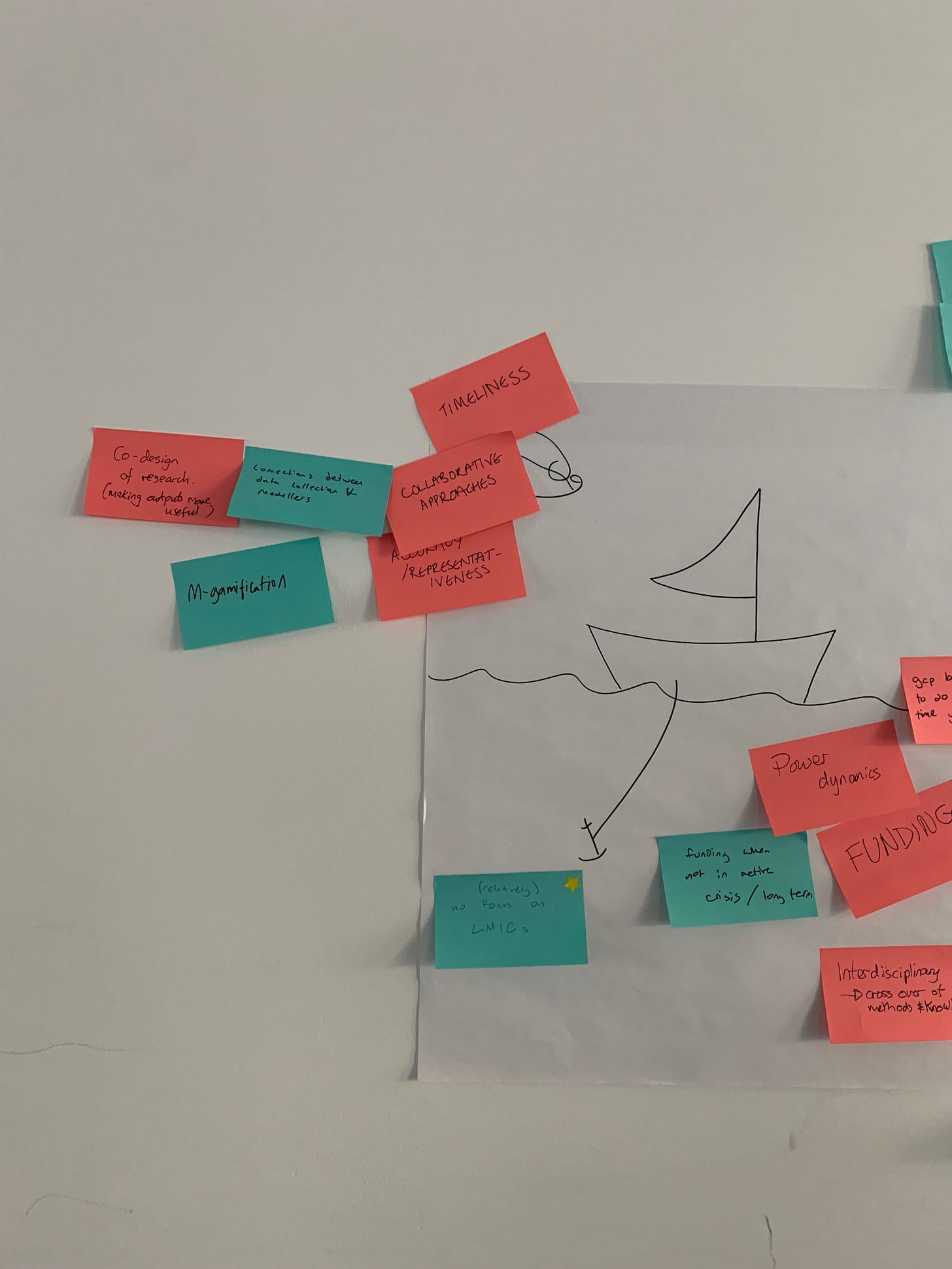Hybrid working - workshopped
Tech company employees push back on the company’s ‘return to office’ policy by launching a petition. A bank sends warning letters to employees who are not in the office enough. In other organisations, some jobs are now fully remote. Studies show that staff are more productive working from home, yet other studies claim they are more productive at the office.
Although lockdowns are over, it’s clear there’s still a lot of tension around ‘return to the office’ policies. Since the pandemic ended, many of us are still looking for the right balance. For example, Adobe started an employee experience experimentation program, Lab82., to reimagine the way it works in a hybrid environment.
Your team may also be feeling that hybrid work isn’t performing as well as it could—that it needs re-imagining. Experience may have caused people to change their minds about what works. You might need a tune-up workshop on your hybrid working arrangements.
Here’s one approach to running a 2-3 hour workshop examining hybrid work issues for a team of 6-10 people. (Larger groups might benefit from having 2 facilitators and working in smaller groups.)
Pre-work?
You might want to do some pre-work. For example in scoping the workshop you could conduct some interviews of key stakeholders in advance, to narrow down the scope of the workshop. Consider this range of possible concerns that could emerge in interviews:
How does office vs remote work affect our productivity?
If the levels of remote working highly vary among staff, how does this affect duties and responsibilities? Capabilities?
If I’m a new starter, how do I learn the ropes at an often empty office? (ineffective or absent mentoring)
Is the hybrid working arrangement fair? It may be hard to know who is coming to the office and how often. Are the costs and benefits being felt evenly?
Does the office physical environment perform well given the new work scenario?
Does remote working cause personal challenges with boundaries between home and work?
How is hybrid working affecting my chances of advancement within the organisation?
Does hybrid work mean we can dress more casually both at home and in the office?
How does coming in to the office affect our physical and mental health (note this isn’t all negative: travelling to the office may expose you to more fresh air, more steps and social interaction, but it also can mean lengthy, painful commutes).
How much does hybrid work mean flexible work (is it ok to work 6am to 10am, and 3pm to 7pm instead of 9am-5pm)?
The workshop itself
This workshop follows the general design thinking format I introduced more fully in this post: collect, choose, create, commit.
Sailboat: How is hybrid work supporting (wind in our sails) our team’s work (or our team’s work in one or more of the above bullet pointed areas)? Give a couple of minutes for people to write down one idea per sticky note before posting these to a sailboat image. Next ask how hybrid work is detracting (anchor weights) from our team’s work? Collect in people’s thoughts as before. (see an example of the sailboat exercise under ‘retrospective’ in this post) 25 minutes
Ask participants to cluster the resulting ‘anchor’ sticky notes. Allow a timed discussion of the results. Are there obvious ‘big areas’ to tackle, several key areas, wide dispersal of issues? 10-15 minutes
Use a method to choose which of these areas to tackle in the remainder of your session, such as dot voting. Pick 1 to 3 issues to address. (I reviewed different ways of voting and choosing in this post.) 10-20 minutes
A key message to convey at this point of choosing: Although you may not be able to address everything in this one session, you will work on some items the group deems important and that will get things moving in a positive direction.
For the issues you’ve chosen to work on, it’s time to create some solutions. If you have time it’s great to do several rounds of creative idea generation. Here are some ideas for exercises:
Forced connections: use a random selection of objects and come up with solutions that are somehow related to these objects
Solve in the style of X: solve in the style of Disney, or Apple, or McDonald’s. Or solve in the style of a certain type of profession (engineer, teacher, accountant). Or solve in the style of a cultural figure (Gandhi, Martin Luther King, etc)
Pass the parcel (brain writing): Write down an idea or two, then pass to your left where the next person builds on your idea(s), and you build on ideas passed to you
At the end of your round of idea generation, ask participants to briefly share their top 2 ideas and one that they really like but is ‘way out there’. Time these shares at about 1 minute each (total, not per idea). (I reviewed a range of sources for exercises, including for idea generation, in this post.) 60 minutes
Reflection: Of the ideas you’ve created, which are the most appealing? Use a method to choose an idea or a few ideas to develop further. An impact-effort matrix can be helpful at this step. 10 minutes
Further development is a first step toward commitment. An example for developing an idea is to create a story board for an experiment, or test, of each idea you want to implement. (see an example of storyboard in this post) 30 minutes
Close! Celebrate your accomplishments in a suitable manner.
A workshop to refine your hybrid work arrangements may be something that people don’t realise they need. But they’ll probably feel lighter after airing thoughts and feelings that have been creeping up over time. Has your team workshopped hybrid working?






